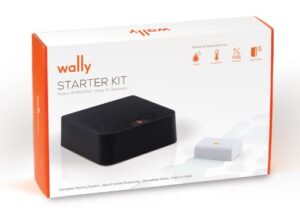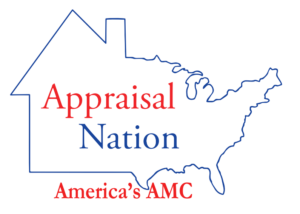 Many real estate investors are seeing an increasing demand to add technological or “smart” upgrades to their projects. This is attributed to both an increase in desire from prospective tenants or homeowners and to the additional value, these smart upgrades add to the properties.
Many real estate investors are seeing an increasing demand to add technological or “smart” upgrades to their projects. This is attributed to both an increase in desire from prospective tenants or homeowners and to the additional value, these smart upgrades add to the properties.
According to Consumer Reports, smart home features can boost your home’s resale value by 5% and a survey of Realtor’s showed that 42% of clients were interested in smart home devices. Investors can target this market by incorporating smart upgrades to their investment properties.
Below are smart home benefits for both investors and buyers/renters:
Smart Homes are Safer
The most common smart home add-on is a security device. This can include the use of cameras and sensors that can detect a break-in, smoke, fire, carbon monoxide, moisture levels to detect flooding and other items to keep you and your property safe. Smart home security devices can even be as simple as a smart lock, where you can lock your front door with an app on your phone. You’ll never have to wonder now if you forgot to lock up for the day, whether it be your primary residence or flip project. Both of these devices will not only be a selling point for prospective home-buyers but also give landlords a peace of mind about the safety and security of their properties.
Smart Homes Save Money
Smart thermostats allow you to control the temperature in your home at all times, including when you are not on the property. According to a recent study by Nest, a smart thermostat company, smart thermostats can save homeowners an average of 10%-12% on their heating bill and an average of 15% on their cooling bill, which can translate to over $170 saved in a year. Saving money is a huge selling point for many buyers, and as a landlord, you can factor these savings into the total rent cost maximize profits.
Remote Monitoring
With these new smart home devices listed below, home-owners and landlords can keep an eye on their property at all times. Now as an investor you don’t have to check in on a vacant property or your current flip project every day to ensure there is no flooding, freezing pipes, break-ins, etc. Now you can check your phone and connect to the smart devices on the property. Giving landlords, investors, and home-owners a peace of mind.
Types of Smart Upgrades:
Smart Thermostats

Source: https://store.nest.com
“The Nest Learning Thermostat was the first thermostat to get ENERGY STAR certified. It learns what temperature you like and builds a schedule around yours. And independent studies showed that it saved people an average of 10% to 12% on heating bills and 15% on cooling bills.”
Smart Door Locks

Source: http://august.com/products
“Lock and unlock your door, control keyless access, and keep track of who comes and goes, all from your phone. They’re discreet and can be installed inside of your door, so your door’s exterior hardware does not change. Use your existing keys any time.”
Moisture/Temperature Sensors

Source: https://www.wallyhome.com/
“Receive instant alerts via text, phone call, email, and push notifications on your mobile device when a water leak is detected, a temperature or humidity reading is outside a desired range, or if a window is left open.”
Video Doorbell

Source: https://ring.com/
“Ring lets you adjust your motion sensors so you can find the ideal setting for your home. You’ll get instant alerts when motion is detected, allowing you to protect your property from the comfort of your smartphone.”
Bridge Loan Network is a leading, online portal in the asset-based lending space. By providing a centralized platform for submitting deals, Bridge Loan Network is technology that connects the private lending industry.
Do you have any other smart home devices you would recommend? Share your recommendations in the comments!



 Simply stated, how your lending process is structured holds a significant role in how efficient, compliant and quick your organization is in processing a loan from application to closing.
Simply stated, how your lending process is structured holds a significant role in how efficient, compliant and quick your organization is in processing a loan from application to closing. Many real estate investors are seeing an increasing demand to add technological or “smart” upgrades to their projects. This is attributed to both an increase in desire from prospective tenants or homeowners and to the additional value, these smart upgrades add to the properties.
Many real estate investors are seeing an increasing demand to add technological or “smart” upgrades to their projects. This is attributed to both an increase in desire from prospective tenants or homeowners and to the additional value, these smart upgrades add to the properties.



 A Team from Bridge Loan Network will be exhibiting at the 2018 Real Estate Symposium presented by Green River Capital, Red Bell Real Estate and ValuAmerica. The Real Estate Symposium, which is taking place February 28th through March 2nd at the Grand America Hotel in Salt Lake City, Utah is a nationwide leading conference for REO experts.
A Team from Bridge Loan Network will be exhibiting at the 2018 Real Estate Symposium presented by Green River Capital, Red Bell Real Estate and ValuAmerica. The Real Estate Symposium, which is taking place February 28th through March 2nd at the Grand America Hotel in Salt Lake City, Utah is a nationwide leading conference for REO experts.
 Take a look at the list of items needed for 24-hour underwriting. Once you have these documents ready to go, head to the lending portal and submit the paperwork. The best part is, you only have to submit the loan package once and then it can be viewed by multiple lenders.
Take a look at the list of items needed for 24-hour underwriting. Once you have these documents ready to go, head to the lending portal and submit the paperwork. The best part is, you only have to submit the loan package once and then it can be viewed by multiple lenders.





